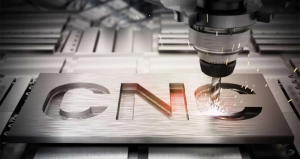CNC: The Core Technology of Metal Precision Machining
1.CNC Introduction
CNC (Computer Numerical Control) is a technology that controls machine tools for metal processing through computer programs. It can realize high-precision and high-complexity part processing, and is applicable to various metal materials such as stainless steel, titanium alloy, and aluminum alloy. Among them, stainless steel is widely used due to its high strength and good processing stability.
2.Main Process Types
2.1 Milling: Uses a rotating milling cutter to cut the workpiece, which can process planes, grooves, curved surfaces, etc., and is used for the processing of mold cavities and mechanical parts.
2.2 Turning: The workpiece rotates, and the tool moves for cutting, which can process shaft, disc and other rotating parts, such as bolts and bearing rings.
2.3 Grinding: Uses abrasives to perform precision processing on the workpiece surface, which can obtain extremely high dimensional accuracy and surface finish, and is used for the processing of precision guide rails and gauges.
3.Technical Advantages
High processing precision, reaching micron-level errors; high degree of automation, reducing manual intervention; strong adaptability, capable of processing complex-shaped parts; stable production efficiency, suitable for mass production and small-batch production of single pieces.
4.Industry Applications
Aerospace: Precision parts processing; automobile manufacturing: engine parts, transmission components; mold industry: various precision molds; medical devices: surgical instruments, implants; electronics industry: precision connectors, chip heat dissipation components, etc.


